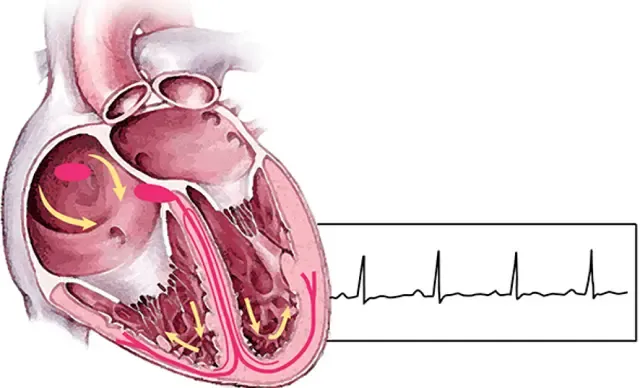Prognosis and Management of Irregular Heart Rhythms
The presence of arrhythmias, commonly referred to as irregular heartbeats, can often be inconspicuous, not affecting the heart's pumping function or causing noticeable symptoms. While usually posing minimal risk, these irregularities can induce heightened anxiety once detected by an individual. It's important to note that some seemingly harmless arrhythmias can evolve into more severe cardiac rhythm disturbances.

|
When an arrhythmia hampers the heart's ability to effectively pump blood, it demands serious attention. The gravity of the situation partially hinges on the origin of the arrhythmia within the heart. Does it originate in the heart's natural pacemaker, the atria, or the ventricles? Generally, ventricular-origin arrhythmias tend to be more critical than atrial-origin ones. Moreover, atrial-origin arrhythmias are typically more concerning than those originating in the pacemaker. Nevertheless, there exist exceptions to these patterns.
For individuals with benign yet unsettling arrhythmias, finding solace in the knowledge of their harmlessness might serve as an effective form of treatment. Occasionally, adjustments in medication or dosage changes can lead to less frequent occurrences or even cessation of arrhythmias. Additionally, lifestyle adjustments such as abstaining from alcohol, caffeine, smoking, or strenuous physical exertion can contribute positively.
Antiarrhythmic medications prove beneficial in suppressing rapid arrhythmias that provoke intolerable symptoms or carry a potential risk. However, no single drug universally addresses all types of arrhythmias in all individuals. Often, a trial-and-error approach involving several drugs is necessary to achieve a satisfactory response. It's crucial to recognize that antiarrhythmic drugs can sometimes exacerbate or even trigger arrhythmias, a phenomenon termed proarrhythmia. Additionally, these drugs can produce various other side effects.
Artificial pacemakers, intricate electronic devices, function as substitutes for the heart's inherent pacemaker. These devices are implanted surgically beneath the skin, typically positioned beneath the left or right collarbone. Wires threaded through veins establish a connection with the heart. Advanced circuitry has markedly minimized the risk of interference from sources like automobile ignition systems, radar equipment, microwaves, and airport security scanners.
Any anomaly detected within the chest warrants a thorough assessment by your primary care physician.
